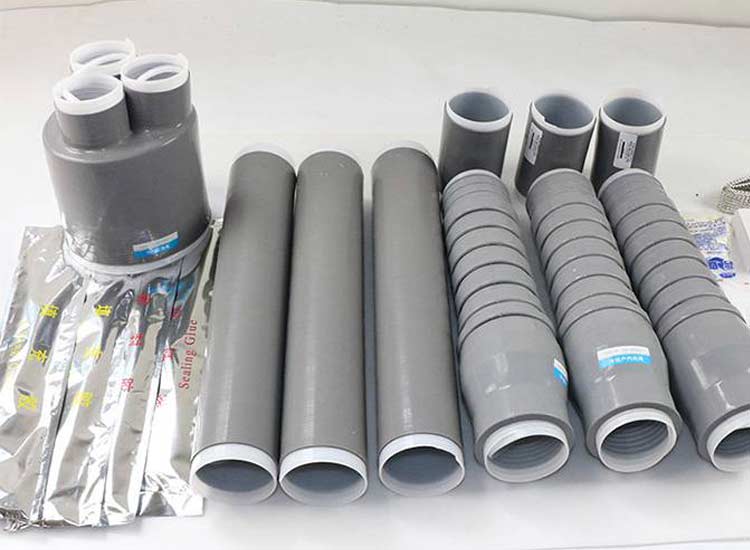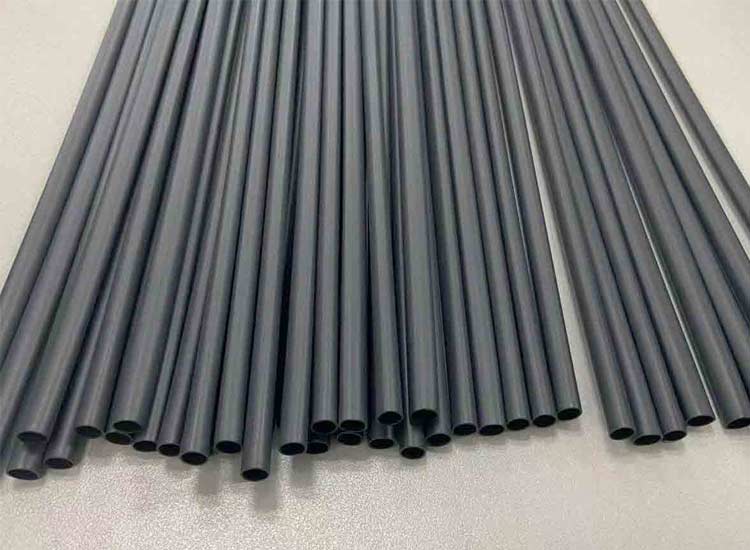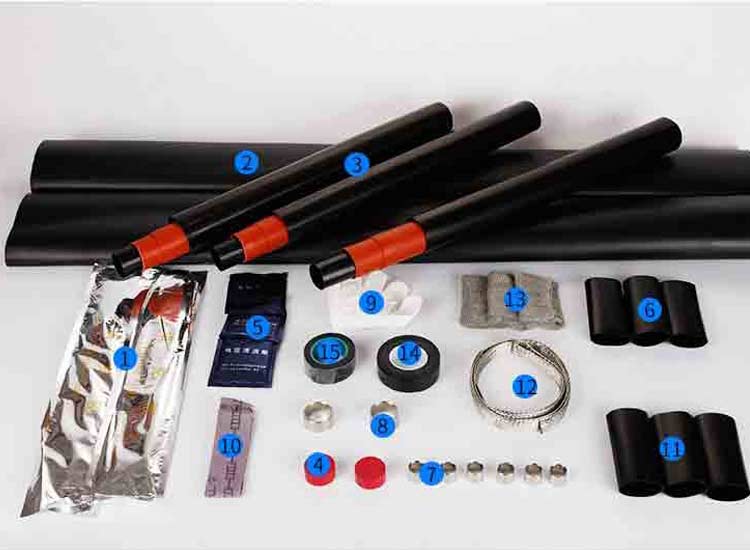The development of new energy in China is now on the fast track, and wind power generation accounts for a significant share of it. Many wind farms are built on the grasslands of Inner Mongolia, and the 35kV collector lines of wind farms are laid using direct burial cables to protect the grassland vegetation and the overall appearance of the grassland. From the operation situation, the cable intermediate head has the phenomenon of discharge.

Here first introduce a few basic concepts of cable accessories, cable accessories refers to a variety of cable terminations and joints in the cable line collectively. A cable termination joint is a device installed at the end of a cable line to connect with an overhead line or electrical equipment. A cable joint is a device that connects cables to each other.
Cable attachment requirements: first of all, the core connection should be good, the contact resistance should be small and stable, able to withstand the impact of fault current, the running joint resistance is not greater than 1.2 times the resistance of the cable core itself. Next is the insulation performance, the accessory insulation should not be lower than the voltage strength of the cable itself, dielectric loss should meet the corresponding national standards and manufacturer requirements. The outdoor part should also consider the harsh climatic conditions can operate safely, generally should be determined by the ministry of electricity standards in the three levels of dirt to determine the length of the outer insulation. And the exposed conductive part of the distance to ground and the distance between phases should meet the corresponding requirements. For low and medium-voltage cable accessories, as XLPE insulated cable accessories are mostly accessories with dry insulation structure. At the same time, the main role of sealing is to prevent the moisture and conductive medium of the operating environment from dipping into the insulation interior and causing such hazards as tree discharge. For ultra-high voltage cables, such as 110kV and above voltage level XLPE insulated cables, sealing not only has the above role, but also plays a key role in preventing the leakage of the internal oil filling of the accessories. The third is good mechanical strength, accessories in the installation and operation of the state to be subject to many external forces, such as human internal force, electrodynamic force, etc.. Especially above 110kV voltage level cable accessories, the cable itself retraction, elasticity, etc. also put forward higher requirements for the accessories themselves.

The main factors affecting the quality of accessories are: electrical insulation performance, thermal performance (anti-aging performance, heat dissipation performance), accessory structure, installation process, and environment.
Notes on the installation of accessories:
Clean treatment of cables and accessories.
Check the moisture condition of the cable.
Stripping and cutting strictly according to the dimensions provided by the installation process, taking care not to damage the cable during stripping and cutting.
Smooth transition between semi-conducting layer and insulation layer.
Remove the oxide layer on the surface of the wire core.
Go to the burrs and flying edges of the gold tools, etc.
Can not have product cracking phenomenon; cold shrinkage product skeleton can not be loose.
The development of cable accessories starts from wrapped type, followed by porcelain sheath type, cast type, heat shrink type, prefabricated type, cold shrink type.
At present, most of the accessories used for 6~35kV extrusion insulated power cables are cold-shrinkable cable accessories and heat-shrinkable cable accessories. The two structure types have different characteristics.
(1) Product characteristics of cold-shrinkable cable accessories: Cold-shrinkable cable accessories are injection-molded with highly elastic special silicone rubber as the material. Electrical stress control unit is geometric: stress cone, using high temperature, high pressure vulcanization molding process and insulation body prefabricated into a whole. The shape and size are reliable and the electrical performance is stable. When installed, it is tightened on the cable and becomes integrated with the cable.
(2) Heat-shrinkable cable accessories product features: heat-shrinkable cable accessories using rubber-plastic composite materials (polymer) extrusion molding, cross-linking with high-energy irradiation methods, expansion before the factory to the required geometric size when cooling stereotypes. When installed in the field, it needs to be heated to a certain temperature to take advantage of the polymer’s “elastic memory” properties to retract into place. This seals the cut and installed portion of the cable tightly to achieve the required insulation seal. The electrical stress control unit is a parametric type.
(3) Features of cold-shrink cable accessories (compared with heat-shrink cable accessories) Compared with heat-shrinkable cable accessories, cold-shrinkable cable accessories have the following characteristics.
① Excellent material electrical properties: the material used for cold-shrinkable cable accessories is silicone rubber, which has extremely high elasticity, good insulation properties, resistance to leakage marks, water repellency, weather resistance, and UV aging resistance.
The material used for heat-shrinkable cable accessories is rubber-plastic composite (polymer), which has no elasticity itself and only “elastic memory” function.
② Stable performance of electrical stress control unit: the electrical stress control unit of cold-shrinkable cable accessories is geometric: the stress cone, which relies on the geometric curve to improve the electric field distortion, its shape has been molded in the company, so the performance of the electrical stress control unit is stable.
The electric stress control unit of heat-shrinkable cable accessories is parametric: that is, the electric stress control unit is formed by using materials with high dielectric constant and volume resistivity between insulating materials and semi-conducting materials. The special parameters of this material are difficult to control and easy to change during the molding and construction process, resulting in unstable performance of the electric stress control unit.
③ The structure type is more ideal: the stress cone and insulation part of the cold-shrinkable cable accessories are prefabricated into a whole in the factory by high temperature and high pressure molding process. During installation, it is only necessary to set the accessory on the treated cable. The quality of the product can be controlled in the factory and the installation workload on site is less.
Heat-shrinkable cable accessories, the structure of the tube: stress tube, internal and external insulation tube, semi-conducting tube overlap and become. There is inevitably a small air gap between the various tubes, especially the middle joint whose partial discharge performance is difficult to ensure. ④ Installation is more convenient: no need to move fire. Due to the limitations of the structure type, heat-shrinkable cable accessories are not suitable for certain fire-proof occasions. Cold-shrinkable cable accessories are not subject to this restriction, and no fire and other special tools are needed for installation, just pull out the skeleton in the main body or put the main body in by hand.
⑤ Good interface characteristics: the material used for cold-shrinkable cable accessories is highly elastic silicone rubber, the accessories are an elastomer, and after installation, the accessories are always tightly hooped on the cable and become one with the cable. At the same time, there is a large pressure on the interface, with good interface characteristics and good partial discharge performance.
As the material of heat-shrinkable cable attachment is heated, it is not flexible at room temperature. After installation in position, the bending and kneading of the cable will cause the heat-shrinkable attachment and the cable to disconnect from each other. Changes in cable operation and ambient temperature will also cause a gap between the heat shrinkable attachment and the cable. This will cause the interface between the attachment and the cable performance is poor. Make the actual operation of the partial discharge performance is very poor. This is especially true for 35kV voltage level.
⑥ Reliable sealing performance: cold-shrinkable cable accessories because of its material is highly elastic silicone rubber material, after installation of the accessories and the cable become one. When the cable is thermally expanded and contracted due to temperature, the accessory will also be thermally expanded and contracted, always tightened on the cable, with excellent sealing performance.

The sealing of heat-shrinkable cable accessories mainly relies on hot melt adhesive and shrinkage compression stress to achieve. After the installation of heat-shrinkable accessories, when the temperature drops, the cable shrinks (thermal expansion and contraction). The shrunken heat-shrinkable parts are structurally stable and no longer have elasticity. Therefore, the cable loses elastic compression force, sealing all rely on sealant, sealing performance is not reliable.
Early Datang Huitengliang wind farm 35kV collector line uses heat shrinkable high voltage cable head. After running for a period of time, short-circuit faults started to appear one after another at the middle head of the cable, which brought great losses to the operation of the wind farm. After analysis, the wind farm is located at a high altitude, and the temperature is basically below 0℃ for half a year, sometimes reaching -30℃, while the construction environment temperature of the heat shrinkable cable head is required to be above 0℃. The wind farm uses YJY23-26/35KV polyethylene power cable, which is stretchable during installation and operation, and the cable will be heated during operation. The heat-shrinkable accessories are made of polyethylene heat-shrinkable sleeves, which are formed at once after heat shrinkage and cannot be expanded and contracted together with the cable. Therefore the expansion and contraction of the cable leads to water in the cable joints and lower insulation, thus affecting the service life of the cable.
During the later expansion of the Huitengliang wind farm, the 35kV collector lines began to use cold-shrink high-voltage cable joints. Although the investments were increased, they were negligible compared to the power generation affected by the occurrence of a fault.